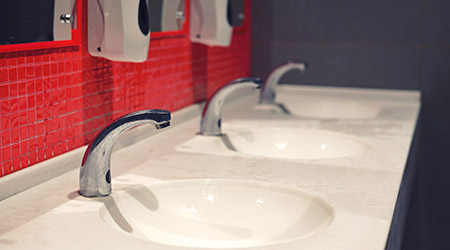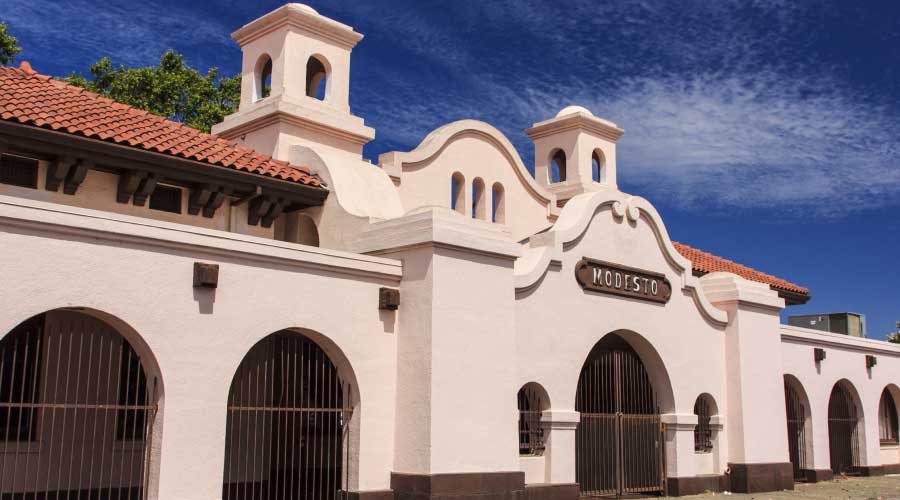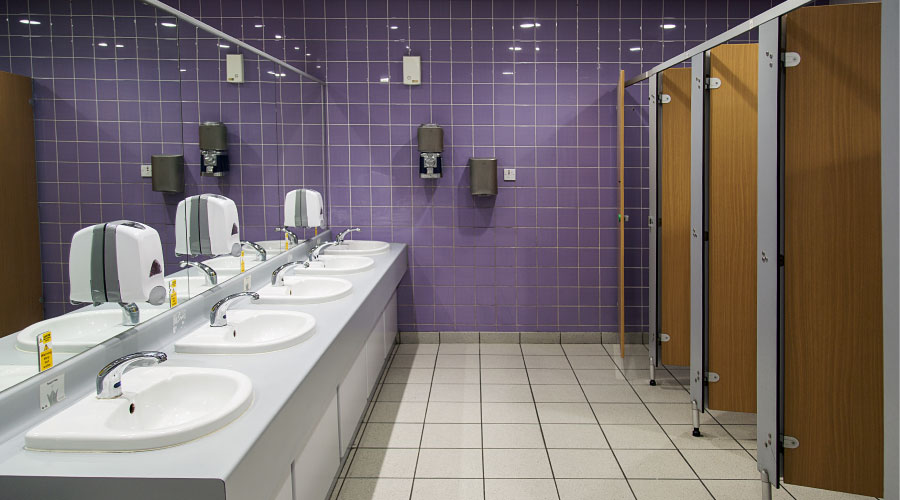How to Consider Restroom Upgrades in the Pandemic Era
Amid COVID-19 challenges, Modesto, Calif., pursues water savings and touchless restrooms.
By Dan Hounsell, senior editor
The COVID-19 pandemic might have upended and complicated upgrade projects that maintenance and engineering managers had planned entering 2020, but for many managers, the delays were temporary. More often as the pandemic has begun to wane, delayed projects in institutional and commercial facilities are coming online, and they are bringing with them the benefits to organizations that managers planned for in the first place.
In the case of the city of Modesto, Calif., a project reshaped by COVID-19 now is bringing the original benefits intended when the project was planned, as well as additional benefits driven by the pandemic.
Pursuing water conservation
As is the case with many facilities – especially those in Western states — the goal of plumbing and restroom upgrades revolves around water conservation, says Patrick Crowley, P.E., Modesto facility manager.
The first upgrade project occurred at the city’s Johansen High School and involved fixtures in the female and male restrooms and changing rooms. In-house staff started work in December 2020 and completed it in late July 2021.
“The project took that long, but the actual construction probably took about three weeks,” Crowley says. The culprit? COVID-19 and its impact on the department’s ability to get needed replacement parts.
“The sinks were push-button, and the new cartridges did not fit in the case for the cartridge,” he says. “They were millimeters too big, and we could not get them in there. They kept leaking, and they would just waste water. Unfortunately, we couldn't get replacement parts, so the project to remove the tri-mount sinks and replace them with new tri-mount units took until late July to finish.”
The pandemic also altered the goals of the upgrade.
“When we started, the goals were water conservation and hygiene,” Crowley says. “Because it was in the middle of the pandemic, a driving factor became going touchless. The new tri-mount sinks that we installed are sensor-activated, so it's a touchless environment.”
The evolving nature of the upgrades also presented Crowley with challenges related to specifying the equipment to be installed.
“I did the research and picked the equipment and worked with our purchasing department since it was an equipment-only purchase, it was pretty straightforward,” he says. “Our process is that we have to get three quotes, and then whoever the low bid is, that's who we go with.”
The challenge came when replacement parts were delayed and Crowley had to locate portable sinks for handwashing.
“We have a contractor that supplies portable restrooms and that kind of stuff,” he says. “We had hosted a vaccine center at our convention center for about 16 months, and we had long lines outside. We had two vendors at that time, and so it was a matter of calling them up, telling them what we needed, and they'd deliver for us. We plumbed in a water supply line instead of having to go out there and fill (a water tank) every day or two.”
Upgrades and aging facilities
The second project took place in the city’s Corporation Yard development, where Crowley’s offices are located.
"It started about two and a half years ago and was completed within three months,” he says. “There are five buildings in the Corp. Yard, and we have a single female and a single male restroom serving all five buildings.” The project, also performed by in-house staff, involved replacing all the restrooms’ old manual flush valves for the water closets and urinals with automatic flush valves, and it took two or three months' worth of construction.
“It was a big water conservation thing,” Crowley says, adding that before the upgrade, “I would go in there, and gallons of water were just left on at the sink or the urinals, and flush valves were stuck open.”
Product specification also became a key consideration for these upgrades.
“We had one or two replacement valves already," from one manufacturer, he says. “So in order to have some consistency in standardization, we stuck with this (original manufacturer’s) automatic valves for the Corp. Yard and for both the men and women. In the women’s room, we had already replaced two of theirs with an auto-flush valve, so we just stayed the course with that manufacturer."
The actual upgrade work also presented challenges for Crowley and his team, some of which related to the age of the building, which was constructed in the mid-1960s.
“On the shutoff valves, the angle stops had not been exercised in probably decades, so they were all non-operational,” he says. “As we got into it, we also discovered that there were no isolation valves at all in the building. We ended up having to shut off the water to the entire building and install isolation valves. So one of the early hurdles we overcame was installing isolation valves to isolate the men's and women's restrooms independently.
“At that point, we could shut off one or the other bathroom and individually deal with the angle stops. We went through and replaced all of those. Then we were able to replace all the valves.”
That wasn’t all.
“We also discovered that the recirculation pump for the hot water was installed on the wrong side of the water heater,” he says. “It was reversed, so it was pumping against everything and on the wrong side. We had to re-plumb that circulation pump to the other side of the water heater, and the flow was corrected.”
What lies ahead
Modesto continues to press ahead with efforts to conserve water, and the efforts have been bolstered by federal funding. The city received funds under the American Rescue Plan Act (ARPA), though it was not eligible for funds from the Coronavirus Aid, Relief, and Economic Security Act (CARES).
“It required governmental agencies to have a resident population of 250,000 or higher, and Modesto has about 214,000, so we didn't get any CARES money,” he says. “The county did, and that's partly how we supported the vaccine center. The county chipped in a bunch of money. Under the American Rescue Plan, we received $47 million.”
Work that Crowley already had completed on facilities upgrades enabled the city to identify and act on the most beneficial plumbing and restroom upgrades.
“I had put together a program for going touchless throughout the city back in mid-2020, so I already had that documented,” he says. “I knew all the facilities and the quantities, so when we received the ARPA money, our parts department has 11 facilities, and they were successful in working with the council in obtaining the money for the restroom upgrades.
"There's the convention center, a bunch of our community centers, and we have two golf courses that the city owns, so there's a total of 11 facilities in which we are going completely touchless — not only flush valves for urinals, water closets and faucets. We're also converting all the soap dispensers and paper towel dispensers to automated touchless.”
The federal funding provided a much-needed shot in the arm for the city’s water conservation and sustainability efforts.
"The work probably was going to be done some other way later,” Crowley says. “But the funds probably made it a higher priority. It also moved it up in our ability to afford it. We would eventually get to where we are today. Two of the big driving factors were the ARPA money, as well as the pandemic driving us toward a touchless world. Those two factors expedited the actual schedule of getting this project moving forward.”
As with the previous projects, the work will be made more challenging by the age of the facilities involved.
"Everything is old," Crowley says. “We've run across a lot of the old 3.6 gallon per flush (gpf) valves out there. We’re not only going to a more reliable shutoff. We're also getting back into compliance with current 1.1 or 1.2 gpf. The urinals are going to be 0.9 gpf, so our anticipation is that we're going to have a huge reduction in water consumption.”
Not surprisingly, the pandemic also will have lingering effects on the projects, primarily in Crowley’s ability to determine water use due to altered occupancy levels.
“We're going to have to go back to 2019 (levels) and earlier metrics because 2020 with the pandemic, we shut down most of our buildings, so we didn't have public in them," he says. “The water usage and power usage dropped way off because they just weren't having public.”
Related Topics:












